Haugland, Knut Magne, born 23-09-1917, in Rjukan,  Tinn kommune, Telemark fylke, Norway, took his examen artium in 1937 qualifying him for university study. In 1938 he enrolled in military radio studies and afterward joined the Norwegian Army.
Tinn kommune, Telemark fylke, Norway, took his examen artium in 1937 qualifying him for university study. In 1938 he enrolled in military radio studies and afterward joined the Norwegian Army.  under command of General Otto Ruge.
under command of General Otto Ruge.
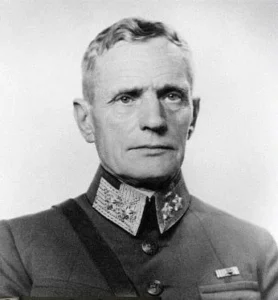
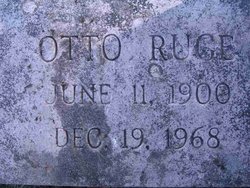 In February 1940 Knut was stationed in Setermoen, and soon fought in battles near Narvik as a part of the Norwegian Campaign against Germany. After Germany’s defeat of the Norwegian forces and the Nazi occupation, Haugland went to work at the factory Høvding Radiofabrikk in Oslo while also secretly involved in the Norwegian resistance movement. After evading arrest several times, in August 1941 he was arrested by Statspolitiet,
In February 1940 Knut was stationed in Setermoen, and soon fought in battles near Narvik as a part of the Norwegian Campaign against Germany. After Germany’s defeat of the Norwegian forces and the Nazi occupation, Haugland went to work at the factory Høvding Radiofabrikk in Oslo while also secretly involved in the Norwegian resistance movement. After evading arrest several times, in August 1941 he was arrested by Statspolitiet, 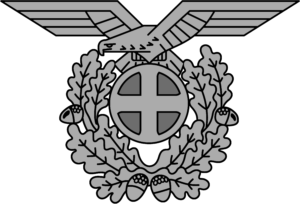 but escaped and fled to the United Kingdom via Sweden. There he enrolled in the Norwegian Independent Company 1 (Kompani Linge).
but escaped and fled to the United Kingdom via Sweden. There he enrolled in the Norwegian Independent Company 1 (Kompani Linge). 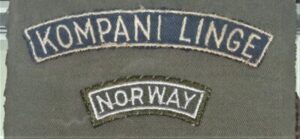
Norwegian Independent Company 1 was a British Special Operations Executive (SOE)  group formed in March 1941 originally for the purpose of performing commando raids during the occupation of Norway by Nazi Germany. Organised under the leadership of Captain Martin Jensen Linge
group formed in March 1941 originally for the purpose of performing commando raids during the occupation of Norway by Nazi Germany. Organised under the leadership of Captain Martin Jensen Linge 
 , it soon became a pool of talent for a variety of special operations in Norway.
, it soon became a pool of talent for a variety of special operations in Norway.
Haugland, with nine other Norwegian resisters organised and carried out the famous raid on the Norsk Hydro Rjukan plant at Vemork.  The plant was known to be producing heavy water, and although the scientist and organiser of the sabotage, Major Leif Hans Larsen Tronstad,
The plant was known to be producing heavy water, and although the scientist and organiser of the sabotage, Major Leif Hans Larsen Tronstad,


 had not been aware of the connection between heavy water and atomic weaponry early in the war, it eventually became clear that Germany could be using the heavy water for a nuclear energy project. Haugland was parachuted over Hardangervidda on 18-10-1942 together with Arne Kjelstrup,
had not been aware of the connection between heavy water and atomic weaponry early in the war, it eventually became clear that Germany could be using the heavy water for a nuclear energy project. Haugland was parachuted over Hardangervidda on 18-10-1942 together with Arne Kjelstrup,  Jens-Anton Poulsson
Jens-Anton Poulsson  and Claus Helberg.
and Claus Helberg. 
 Their codename was Operation Grouse, and their first mission was to await the British Operation Freshman. Freshman became a disastrous failure, but Grouse was ordered to wait for another team: Operation Gunnerside. The plant at Vemork was successfully sabotaged in February 1943.
Their codename was Operation Grouse, and their first mission was to await the British Operation Freshman. Freshman became a disastrous failure, but Grouse was ordered to wait for another team: Operation Gunnerside. The plant at Vemork was successfully sabotaged in February 1943.
Haugland and others, stayed in Hardangervidda for two months with Einar Skinnarland,

 whom he trained. Haugland then went to Oslo to train marine telegraphers. After a trip to the United Kingdom for radio supplies, he returned to Norway in November, being parachuted at Skrimfjella together with Gunnar Fridtjof Thurman Sønsteby
whom he trained. Haugland then went to Oslo to train marine telegraphers. After a trip to the United Kingdom for radio supplies, he returned to Norway in November, being parachuted at Skrimfjella together with Gunnar Fridtjof Thurman Sønsteby 
 . Haugland was arrested for a second time, by the Gestapo
. Haugland was arrested for a second time, by the Gestapo  in Kongsberg, but again escaped and commenced his training duties. On 01-04-1944 he narrowly escaped another capture by the Gestapo when one of his transmitters, hidden in the Oslo Maternity Hospital,
in Kongsberg, but again escaped and commenced his training duties. On 01-04-1944 he narrowly escaped another capture by the Gestapo when one of his transmitters, hidden in the Oslo Maternity Hospital,  was located by radio direction finding. Haugland fled to the United Kingdom again, and did not return.
was located by radio direction finding. Haugland fled to the United Kingdom again, and did not return.
Knut was awarded Norway’s highest decoration for military gallantry, the War Cross with sword. ![]() He was awarded this decoration twice, in 1943 and 1944: the War Cross with two swords. In addition, Haugland was awarded the Distinguished Service Order
He was awarded this decoration twice, in 1943 and 1944: the War Cross with two swords. In addition, Haugland was awarded the Distinguished Service Order ![]() and the Military Medal
and the Military Medal ![]() by the British. He also received the French Croix de Guerre avec Palme
by the British. He also received the French Croix de Guerre avec Palme ![]() and Légion d’honneur
and Légion d’honneur ![]() and the Royal Norwegian Order of St. Olav.
and the Royal Norwegian Order of St. Olav. ![]() He was also awarded the Medal with rosette
He was also awarded the Medal with rosette ![]() and Haakon VII’s 70-Medal.
and Haakon VII’s 70-Medal. ![]() The United States decorated him with the Medal of Freedom with bronze palm.
The United States decorated him with the Medal of Freedom with bronze palm. 
After the war, Haugland continued his military career for many years, except for 1947 when he took part in the Kon-Tiki expedition  . In 1951 he married librarian Ingeborg Prestholdt. He participated in the Independent Norwegian Brigade Group in Germany from 1948 to 1949, continued in the Forsvarsstaben until 1952, when he was transferred to the Royal Norwegian Air Force.
. In 1951 he married librarian Ingeborg Prestholdt. He participated in the Independent Norwegian Brigade Group in Germany from 1948 to 1949, continued in the Forsvarsstaben until 1952, when he was transferred to the Royal Norwegian Air Force.  He headed the electronic intelligence service in Northern Norway, an important position during the Cold War. He held the ranks of major from 1954 and lieutenant colonel from 1977.
He headed the electronic intelligence service in Northern Norway, an important position during the Cold War. He held the ranks of major from 1954 and lieutenant colonel from 1977.
He left the Air Force in 1963 to become acting, later permanent, director of the Norway’s Resistance Museum. He retired from this position in 1983. He was also the director of the Kon-Tiki Museum from its start in 1947 to 1990. He rounded off his career as board chairman of the Kon-Tiki Museum in 1991. Haugland also served as Colonel John Skinner “Belge” Wilson ‘s  attaché at the 1949 12th World Scout Conference in Elvesæter. Five of the six men in the Kon-Tiki expedition were Scouts.
attaché at the 1949 12th World Scout Conference in Elvesæter. Five of the six men in the Kon-Tiki expedition were Scouts.
Haugland first met Thor Heyerdahl 
 in 1944 at a paramilitary training camp in England. It was here that Haugland first heard of Heyerdahl’s theories about Polynesian migration patterns, and his plans to cross the Pacific on a balsa wood raft. In 1947 Haugland was invited by Heyerdahl to join the Kon-Tiki expedition as a radio operator. On the expedition Haugland and Torstein Raaby
in 1944 at a paramilitary training camp in England. It was here that Haugland first heard of Heyerdahl’s theories about Polynesian migration patterns, and his plans to cross the Pacific on a balsa wood raft. In 1947 Haugland was invited by Heyerdahl to join the Kon-Tiki expedition as a radio operator. On the expedition Haugland and Torstein Raaby  (another former resistance member) were in frequent radio contact with American amateur operators, sending meteorological and hydrographic data to be passed on to the Meteorological Institute in Washington, DC. Despite the tiny radio which had an output of only 6 watts, about the same as a small battery-powered torch, they managed to contact radio operators in Norway, even sending a telegram to congratulate King Haakon VII
(another former resistance member) were in frequent radio contact with American amateur operators, sending meteorological and hydrographic data to be passed on to the Meteorological Institute in Washington, DC. Despite the tiny radio which had an output of only 6 watts, about the same as a small battery-powered torch, they managed to contact radio operators in Norway, even sending a telegram to congratulate King Haakon VII  on his 75th birthday.
on his 75th birthday.
Death and burial ground of Haugland, Knut Magne.
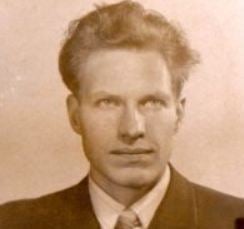
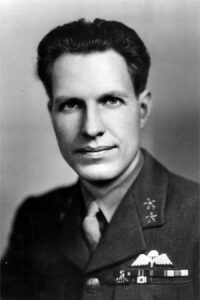
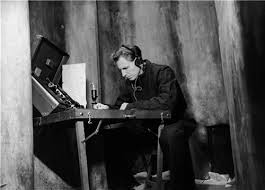

Haugland played himself in the 1950 documentary film Kon-Tiki. Haugland died on 25-12-2009, age 92 and was the last living crew member who served on the Kon-Tiki expedition. Knut Haugland is buried with his wife Ingeborg Prestholdt, who died also age 92 in 2014, at the Steinskogen Cemetery in Bærum. Steinsskogen Cemetery, Old Ringeriksvei 155, 1356 Bekkestua, Norway.
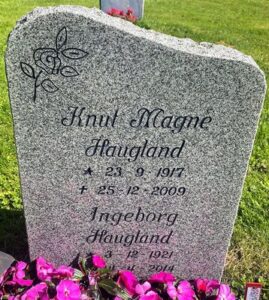
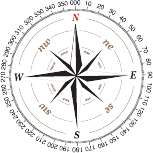




























Leave a Reply